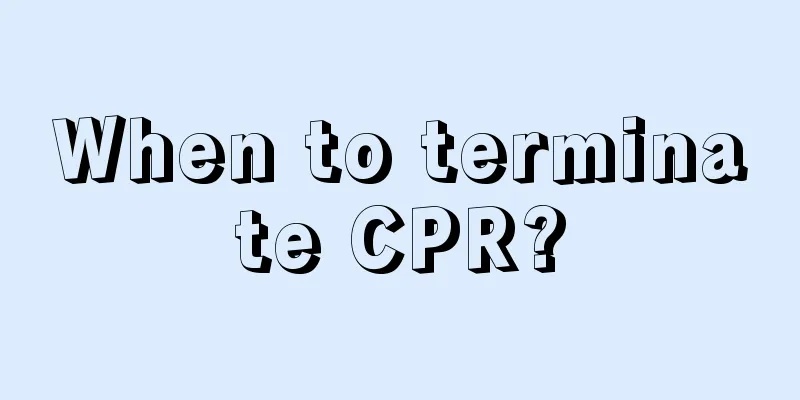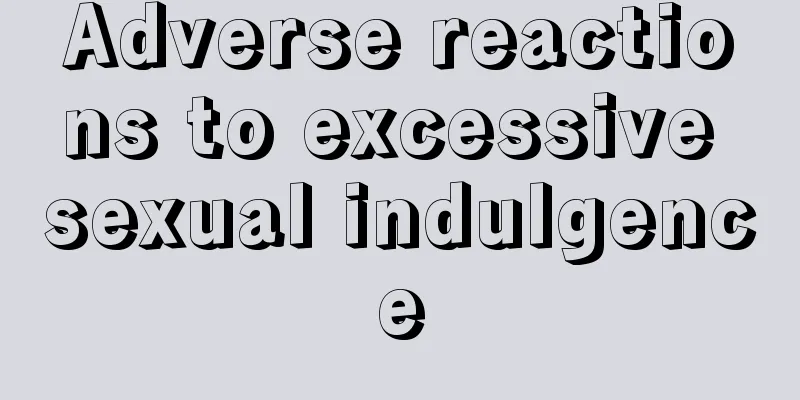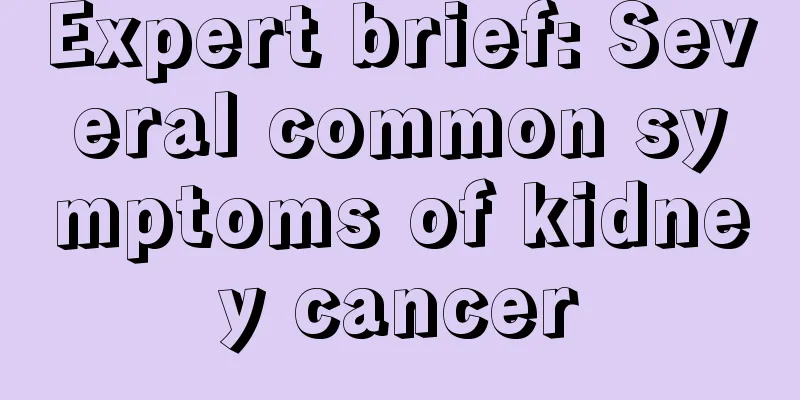When to terminate CPR?

|
In daily life, when you encounter an emergency where the heart stops suddenly, cardiopulmonary resuscitation is needed. By performing cardiopulmonary resuscitation, the heart can be restored to its normal state and breathing can be restored, and lives can be saved. However, terminating cardiopulmonary resuscitation also needs to meet certain standards. Generally, when the human heartbeat and pulse stop, or the patient's skin and facial complexion begin to slowly turn grayish white, cardiopulmonary resuscitation needs to be terminated. When to stop CPR (1) Carotid artery pulsation: When compression is effective, you can feel the carotid artery pulsation with each compression. If you stop pressing, the pulsation will If the pulse also disappears, chest compressions should be continued. If the pulse still exists after compressions are stopped, it means that the patient's heartbeat has recovered. (2) Complexion (lips): When resuscitation is effective, the complexion changes from cyanosis to rosy. If it turns grayish white, it means that resuscitation is ineffective. (3) Others: When resuscitation is effective, spontaneous breathing may occur, or pupils may shrink and reflex to light, or even eye movement and limb twitching may occur. Introduction to the criteria for terminating cardiopulmonary resuscitation: On-site CPR should be continued uninterruptedly, and the decision to stop resuscitation should not be made lightly. On-site rescue personnel may consider terminating resuscitation only if the following conditions are met: (1) The patient's breathing has been effectively restored. (2) There is no heartbeat or spontaneous breathing, CPR continues for more than 30 minutes at room temperature, and EMS personnel arrive at the scene to determine that the patient is dead. (3) There are indicators for EMS personnel to take over resuscitation or other personnel to take over rescue. In most people who suffer cardiac arrest, the heart will at some point go into ventricular fibrillation. There are several stages to ventricular fibrillation, and if defibrillation can be performed within five minutes of the patient falling, the overall emergency treatment will have the greatest success rate. Because most emergencies do not allow medical personnel to reach the patient within five minutes, the highest survival rate can only be achieved by relying on the general public's familiarity with cardiopulmonary resuscitation and the readily available automated external defibrillators in the community. Combining the two has been shown to produce exceptionally high survival rates in airports, airliners, casinos and hospitals. CPR plays an important role both before and after electric shock. When acute cardiac arrest caused by ventricular fibrillation occurs, the patient's chance of survival will increase by two to three times if cardiopulmonary resuscitation can be performed immediately. In this case, cardiopulmonary resuscitation must be continued until the arrival of an automated external defibrillator or a manual defibrillator. If a patient has been in ventricular fibrillation for about five minutes without any treatment, a brief period of cardiopulmonary resuscitation (to push blood to the brain and heart) followed by defibrillation is known to produce better results than immediate defibrillation. It is equally important to perform CPR immediately after the shock (do not waste time examining the patient), because most patients experience cardiac arrest or no pulse current activity after the shock, and CPR may convert the above situation into a perfusing rhythm. Not all deaths are from acute cardiac arrest and ventricular fibrillation. In an unknown percentage of patients, the cause of cataplexy is asphyxiation, such as drowning or drug intoxication. In children, asphyxia is the largest cause of acute cardiac arrest (in adults, the largest cause is ventricular fibrillation), and about 5 to 15% are from ventricular fibrillation. Animal experiments have shown that in the event of suffocation, the best first aid results come from chest compression and ventilation. However, even without artificial respiration, chest compression alone is more effective than doing nothing. Cardiac arrest refers to the sudden cessation of heart beating due to various reasons in unexpected circumstances and time, resulting in the sudden cessation of effective cardiac pump function and effective circulation, causing severe ischemia, hypoxia and metabolic disorders in tissues and cells throughout the body. If not rescued in time, the person may lose his life immediately. Cardiac arrest is different from any terminal cardiac arrest of a chronic disease. If correct and effective resuscitation measures are taken in time, the patient's life may be saved and he or she may recover. Once cardiac arrest occurs, if it is not rescued and resuscitated immediately, it will cause irreversible damage to the patient's brain and other important organs and tissues after 4 to 6 minutes. Therefore, cardiopulmonary resuscitation after cardiac arrest must be performed immediately on the spot to win the most precious time for further rescue and even saving the life of the cardiac arrest patient. |
<<: What are the main nursing measures after cardiopulmonary resuscitation?
>>: Is it true that inheritance from one’s father is real?
Recommend
Exercise conditioning methods for fibroids
Many patients with fibroids want to know if there...
How to solve the problem of constant bloating and farting?
Some friends always feel that their stomach is bl...
How to determine if you have melanoma
First of all, we need to know what melanoma is. M...
Blood in the stool is the main symptom of rectal cancer
Blood in the stool is the main symptom of rectal ...
Be alert! These inconspicuous signals may be the "early warning" of lung cancer
In this fast-paced era, we often inadvertently ig...
How to make delicious dried squid
Squid is a common seafood with high nutritional v...
Common symptoms of critical illness of lung cancer
The early symptoms of lung cancer are not obvious...
What to do if you have cervical pain
More and more white-collar workers sit for long p...
Dietary taboos for melanoma
On weekdays, the chance of contracting melanoma i...
Why is my scalp so oily
In daily life, it is quite common to have an oily...
Breast milk has no nutritional value after a few months
Breast milk is the best nutrition for newborn bab...
How to use oxygen bags
Most oxygen bags are still kept at home for use. ...
The principle of white sugar softening fish bones
I wonder if you have ever heard that when a fish ...
How big is the risk of rhinoplasty
Rhinoplasty is a surgery that has become popular ...
Lung cancer What is interventional treatment? Analysis of interventional treatment methods for lung cancer
There are many treatments for lung cancer, mainly...









